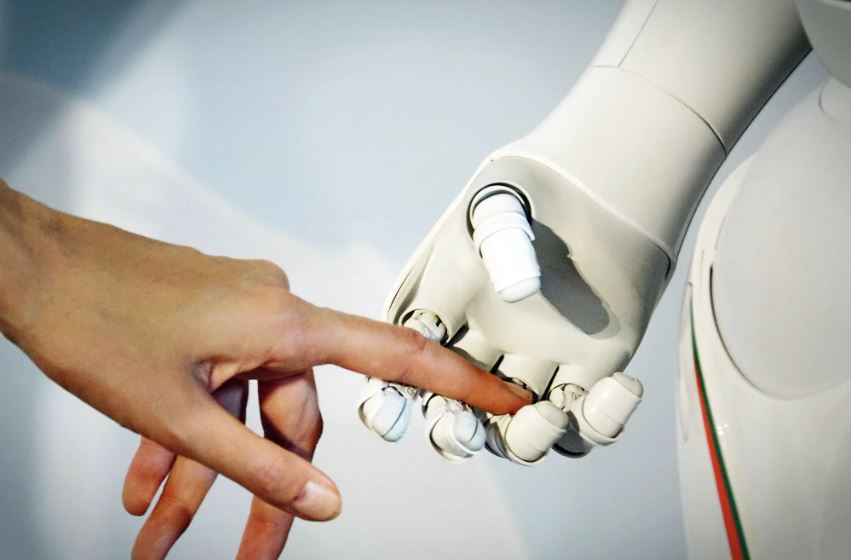Robots with almost human-like senses are on the way?
The relentless march of technology has ushered in an era where robots are becoming increasingly sophisticated, blurring the lines between fiction and reality. One of the most exciting frontiers in robotics is the development of machines with senses that closely mimic those of humans. This groundbreaking advancement is poised to revolutionize various industries, from healthcare to manufacturing, as robots equipped with almost human-like senses promise unprecedented levels of efficiency, safety, and adaptability.
Sight: At the forefront of this technological revolution is the enhancement of robotic vision. Traditional robots have relied on cameras and sensors to navigate their environments, but recent breakthroughs in computer vision and artificial intelligence have propelled the development of robots with vision capabilities akin to human eyesight. These robots can perceive depth, color, and motion, allowing them to navigate complex and dynamic environments with precision.
Touch: Another critical aspect of human-like senses in robots is the integration of advanced tactile feedback systems. Researchers and engineers are working on equipping robots with sensors that can replicate the human sense of touch. This enables robots to handle delicate objects, respond to changes in pressure, and even detect textures, opening up new possibilities for applications in delicate surgeries, manufacturing, and other industries where a gentle touch is essential.
Hearing: Advancements in auditory sensors are bringing robots closer to replicating the human sense of hearing. These sophisticated sensors enable robots to detect and interpret sounds, localize sources of noise, and even understand spoken commands. This development is particularly promising for applications in human-robot collaboration, as robots can now respond to vocal cues and work alongside humans more seamlessly.
Smell and Taste: While replicating the human sense of smell and taste in robots is a more challenging task, progress is being made in this domain as well. Chemical sensors capable of detecting and analyzing odors are being integrated into robots for applications in areas such as quality control in food processing or identifying hazardous substances in emergency response scenarios. Although the full emulation of taste remains a complex challenge, the ability to detect and analyze chemical properties is a significant step forward.
The integration of almost human-like senses in robots is opening up a myriad of applications across various industries. In healthcare, robots with advanced vision and touch capabilities can assist in surgeries with unparalleled precision. In manufacturing, these robots can work alongside human workers, handling intricate tasks with finesse. In search and rescue operations, robots equipped with enhanced senses can navigate complex environments to locate and assist survivors. As we go deeper into the realm of robots with human-like senses, ethical considerations come to the forefront. Questions surrounding privacy, security, and the potential impact on employment must be addressed. Additionally, ensuring that these robots adhere to ethical guidelines in their decision-making processes is crucial to prevent unintended consequences. The development of robots with almost human-like senses marks a transformative moment in the field of robotics. With enhanced sight, touch, hearing, and emerging capabilities in smell and taste, these machines are poised to redefine the way they interact with the world. As researchers and engineers continue to push the boundaries of technological innovation, the integration of these senses brings us closer to a future where robots seamlessly collaborate with humans, augmenting our capabilities and ushering in a new era of technological progress.
The development of robots with human-like senses is a global endeavor, with research and advancements taking place in various countries around the world. Here’s a brief overview of the international status:
United States: Leading universities and research institutions in the U.S., such as MIT, Stanford, and Carnegie Mellon University, are heavily involved in research on robotic perception and sensory capabilities. Additionally, tech companies like Boston Dynamics and Google’s X (formerly Google X) are pioneering advancements in robotics, including sensory technologies.
Japan: Japan has a long history of robotics research and development, with companies like Toyota, Honda, and SoftBank investing in advanced robotics. Japanese researchers are working on improving robot perception through vision systems, tactile sensors, and even emotion recognition.
European Union: Countries within the European Union, including Germany, France, and the United Kingdom, are actively contributing to the development of robots with human-like senses. European research projects, such as the EU’s Horizon 2020 program, fund initiatives aimed at advancing robotic perception and cognition.
South Korea: South Korea is known for its significant investments in robotics, with companies like Hyundai and Samsung exploring applications of robotics in various industries. Research institutions in South Korea are focusing on enhancing robot perception through sensor technologies and machine learning.
China: China has emerged as a major player in robotics research and development, with substantial investments in AI and automation. Chinese companies like DJI and Alibaba are at the forefront of robotics innovation, with a focus on improving robot perception and interaction capabilities.
Other Countries: Countries like Canada, Australia, and Israel also have active research communities working on robotics and AI. These countries contribute to the global effort to develop robots with advanced sensory capabilities.
Overall, the international status of robots with human-like senses is characterized by collaborative research efforts and significant advancements across multiple countries, each contributing to the evolution of robotic technologies.
Source

